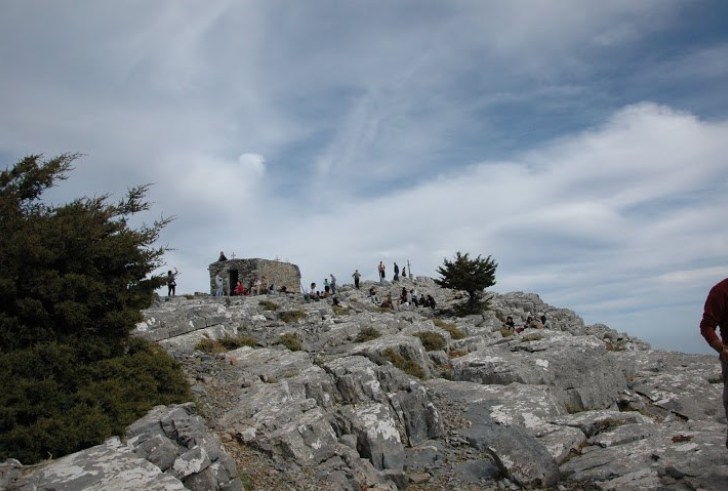
Summer’s end at the village of Kato Kapetaniana, in the Asterousia mountains, under the shadow of Kofinas. Sailing the Libyan sea. One of the moments when I pinch myself trying to figure out if I have actually traveled or is it one more of the many tales of my friend Yorgis, who works in Herakleion but always comes back to his village, Kato Kapetaniana. With everything I’ve heard, I want to go again and again to taste the fritters, visit Trypiti, climb the mountainside, be there in all seasons of the year. Because there, the days are still different. How can a wee place like that, hold so many promises?
A promise, among others, for the most authentic tree-worship in the modern world, on September 14, feast day of the Holy Cross celebrated in the small chapel clinging to the top of Kofinas. The village boys go up from the day before. Who will cut the apples that will be placed on the church altar? Kofonas’ apple trees have put down their roots in the craggy rocks. The call them apples but, actually, they are the size of chickpeas and they are the fruit of the thorny rowan (Balkan Whitebeam). Trees, it is said, that grow in the place where a pilgrim woman fell to her death from the rocks. The fruit will stay in the water of the spring all through the night and the next day, it will be blessed by the priest on the altar. Young and old go up to the chapel before daybreak. The priest, after blessing the fruit, circles the summit with it, followed by all the faithful. Eventually, the blessed fruit with many healing qualities, will be distributed, much like a communion wafer, to those present. And they will keep it by the icon at home through the whole year, to ward off evil. And then, next year, God’s willing, we will chalk up another summer at the top of Kofinas, gazing out to the Libyan sea.

